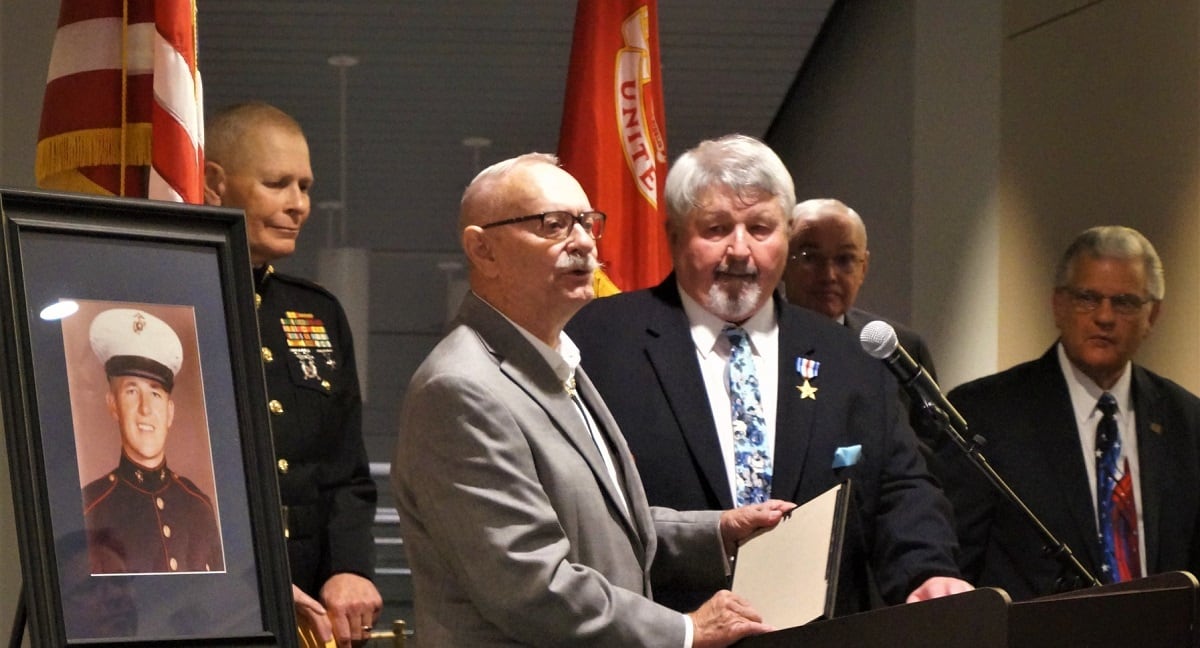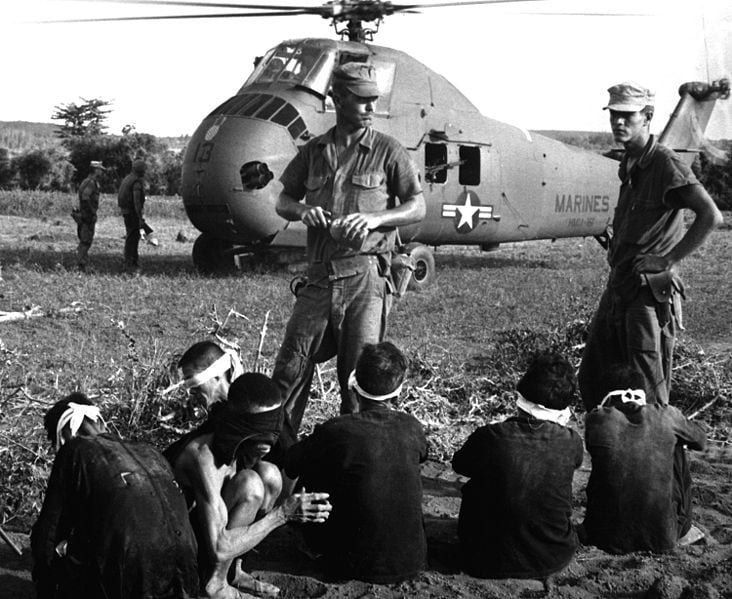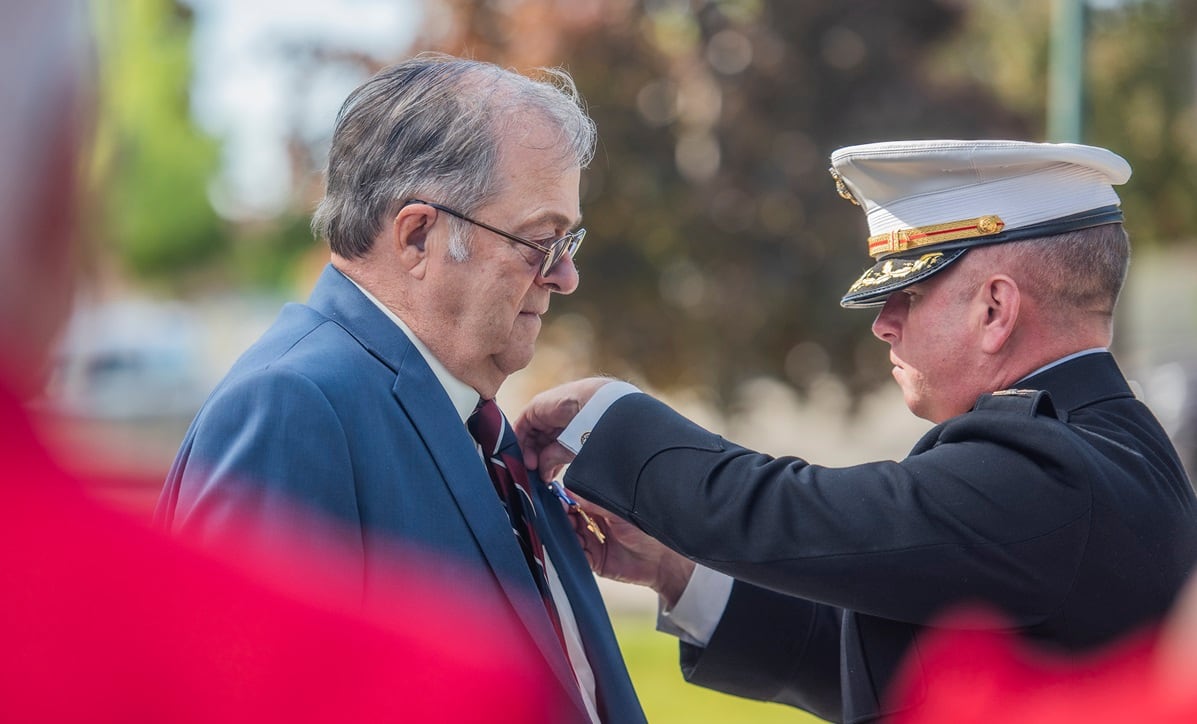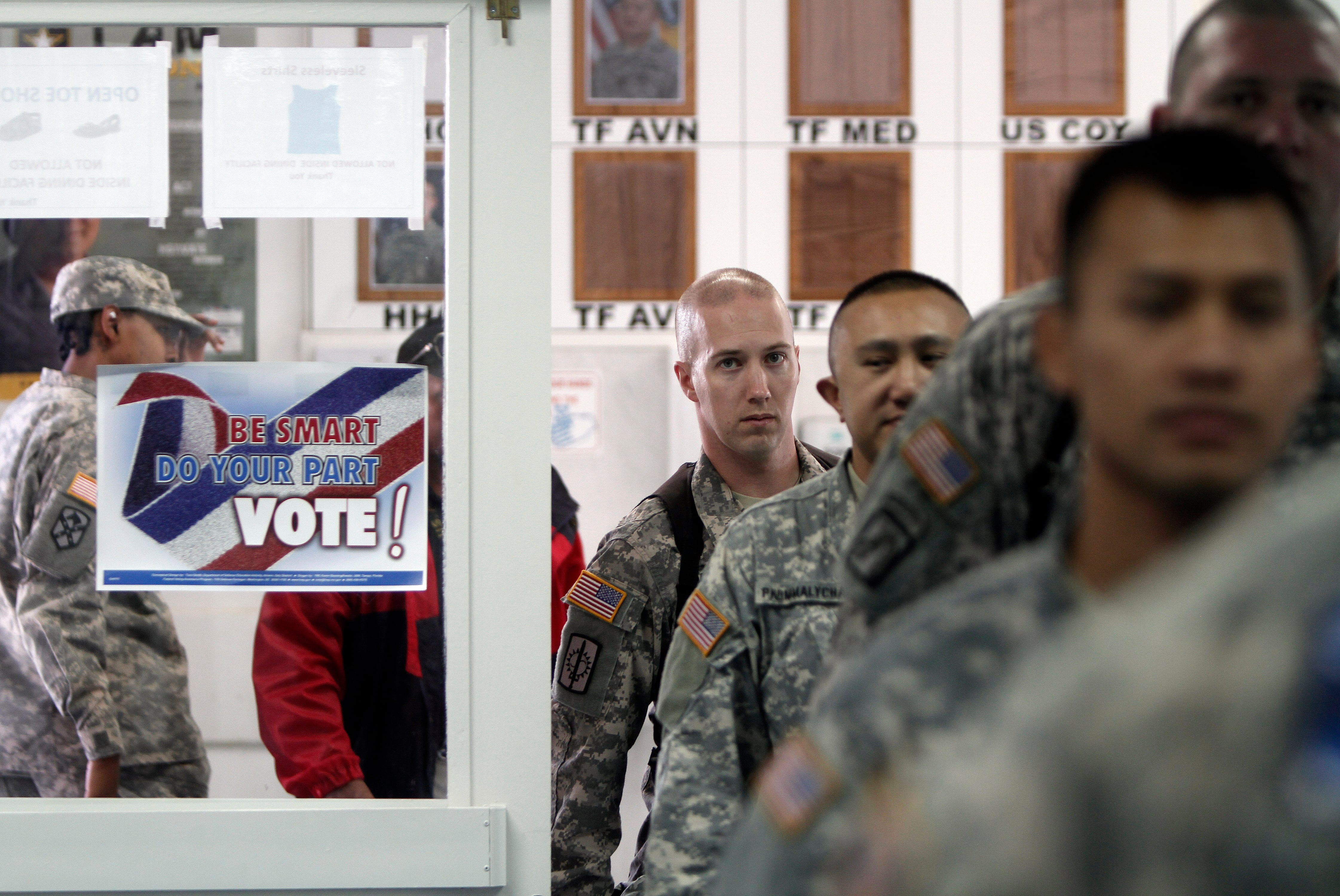When Lance Cpl. Milo Plank Jr.’s tank platoon rolled off landing craft and onto beaches south of Chu Lai, Vietnam, in August 1965, nobody fired a shot at them.
But later that day, as he drove his M48 tank, rumbling through a meadow alongside two other tanks, a burst of machine-gun fire slapped its metal shell, wounding the crew’s loader who’d been standing in the turret’s hatch.
A fire team of infantrymen ― the eyes and ears of the three-tank unit — were behind him, some of them were wounded too. A corpsman rushed up. But Plank knew they’d need help getting the wounded sergeant out of the turret.
He peeked out the driver’s hatch, shoving his .45-caliber pistol out first, and only a few feet away saw a Viet Cong fighter raising his rifle toward the turret to fire on the men outside.
What the 18-year-old did next wouldn’t be recognized for 58 years.
On May 29, in Boise, Idaho, Marine Col. William Chairsell pinned the Silver Star Medal on the blue sport coat lapel of the now 77-year-old Plank.
It is the third-highest military valor decoration.
RELATED

The teenage Marine was one of hundreds who participated in Operation Starlite ― the first major, solely U.S. military offensive operation of the Vietnam War.
The Marines had been the first ground troops sent to South Vietnam in March, only five months before.
From Aug. 18, 1965, to Aug. 25, 1965, infantry, artillery, armor and aircraft of the III Marine Amphibious Force swept into the land surrounding the Van Tuong village complex. It was nine miles south of the strategically vital Chu Lai Air Base and where intelligence had reported the Viet Cong’s 1st Regiment launched its operations.
Plank’s three-tank team with A Company, 3rd Tank Battalion, 3rd Marine Division, was part of that force.
By the end of the eight-day operation the United States would see 45 men killed in action. U.S. officials reported more than 600 enemy killed, while Viet Cong claim only 200 perished or were captured.

The lance corporal had mere seconds to react to the man raising a rifle at his comrades. He fired his pistol so close to his own face that the slide smacked it, causing him to bleed. For a moment, he thought he’d been shot himself.
The man disappeared. Plank raised further out of the hatch and saw another Viet Cong fighter and fired at him too. Then he saw a third, whom he also shot.
He then saw where they were coming from: a 6-foot-deep by 4-foot-wide trench covered in brush running parallel to his tank.
“I thought it was clear but there was still some activity in trench, could hear movement, see brush moving,” Plank said in a 2019 interview for the U.S. Marine Corps Tankers Association oral history project.
Standing atop his tank he could see down in it.
Hearing chatter and movement, he knew but couldn’t see who was in it.
“I fired my pistol up and down where I thought they were, fired all three magazines, the ruckus settled down,” Plank said.
Out of rounds he looked to the rear, where he saw fellow Marine, Cpl. Robert O’Malley, tending to the wounded in his infantry squad. The corporal’s back was to the trench, brush continued moving as the crouched Viet Cong were moving down the line and toward them.
“I screamed at him, ‘They’re coming down the trench this way,’” Plank said.
O’Malley popped up and began firing his M14 into the trench. The corporal then leapt inside the trench and continued firing.
Plank could hardly believe the man’s bravery. He hopped back inside his tank and yelled for more ammo.
His crewmate tossed a 50-round box of .45-caliber rounds up to him and he began shoving them into his three empty magazines, ready to go back out to help O’Malley, even if it meant going into the trench armed only with a pistol.
Plank could hear the M14 ripping on automatic fire and the blast of hand grenades.
But within the scant minutes it took to reload and reemerge he saw O’Malley haul himself out of the trench, carrying an armful of enemy weapons.
“He had wiped them all out, saved a lot of lives,” Plank said.
After O’Malley and his squad evacuated the fight, Plank’s tank team continued ― each of his crewmates were injured during the operation. Some were killed in action in the following days; one tank was completely disabled while others were shot up so bad they hardly were operational.
Plank would celebrate his 19th birthday on the final day of Operation Starlite.
A little more than a year later, O’Malley would receive the Medal of Honor for fighting off the enemy as his wounded squad mates were evacuated from the firefight.
Nearly six decades later, Plank received his medal for actions that saved the corporal’s life.
Todd South has written about crime, courts, government and the military for multiple publications since 2004 and was named a 2014 Pulitzer finalist for a co-written project on witness intimidation. Todd is a Marine veteran of the Iraq War.




